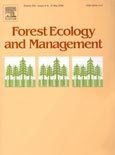| 来源类型 | Articles
|
| 规范类型 | 论文
|
| DOI | 10.1016/j.foreco.2009.11.007
|
| ISSN | 0378-1127
|
| Landscape-scale variation in the structure and biomass of the hill dipterocarp forest of Sumatra: Implications for carbon stock assessments |
| Jagger, P.
|
| 发表日期 | 2010
|
| 出处 | Forest Ecology and Management 259(2): 505 - 513
|
| 出版年 | 2010
|
| 语种 | 英语
|
| 摘要 | One of the first steps in estimating the potential for reducing emissions from deforestation and forest degradation (REDD) initiatives is the proper estimation of the carbon components. There are still considerable uncertainties about carbon stocks in tropical rain forest, coming essentially from poor knowledge of the quantity and spatial distribution of forest biomass at the landscape level.
We evaluate the influence of site and topography on forest structure, biomass and carbon stock over a forested landscape in Sumatra. Sixteen sites were selected across a landscape of ca. 1000 km2, and within each site, a network of small 0.1 ha plots was laid down perpendicular to the major topographical gradient. Structural parameters for trees with diameter bigger or equal to 10 cm and major life forms were recorded for each plot. The total sampled area was 70.2 ha.
The above-ground biomass (AGBM) in the 16 sites ranged from 271 +/- 19 to 478 +/- 38 Mg ha-1, with a mean of 361 +/- 7Mg ha-1. This value is similar to the global tropical wet forest estimate of Keith et al. (2009), but 23% higher than the biome default value given in the IPCC (2006) guidelines. Plots on acid tuff were themost distinctive in having fewer and smaller trees, with a resulting lowAGBM. The number of stems was low, but the average tree diameterwas larger onthe nutrient-rich youngvolcanic andesitic soils. Landscape-scale variability of forest structure and dynamics was considerable. Within sites, there was little variation of mean height or mean diameter of the trees, but significant differences in stem density, basal area and AGBM between land facets. Both topography and geology appeared to affect the dynamics and the biomass of the forest.
At the same time, our findings confirm the need for caution in extrapolating data from small plots to larger spatial scaleswhen estimating carbon stocks for a given forest type or a region.Our results forC stock values for Sumatra lowland and hill dipterocarp forests (135240 Mg ha-1, with a mean of 180 Mg ha-1) showed higher variability in C stock values at landscape level than generally reported in the literature. Based on our results, stratified sampling is recommended for biomass and carbon estimation. Within an error range of 68% of the AGBM, a minimumarea of 46 ha should be sufficient to estimate biomasswith satisfactory accuracy at the landscape scale. Networks of severalsmall plots across landscape are preferable to fewer larger plots, providing that the sampling is representative of the land facets in the area. |
| 主题 | carbon
; biomass
; tropical rain forests
; Dipterocarpaceae
|
| 区域 | Sumatra
|
| URL | https://www.cifor.org/library/2946/
|
| 来源智库 | Center for International Forestry Research (Indonesia)
|
| 引用统计 |
|
| 资源类型 | 智库出版物
|
| 条目标识符 | http://119.78.100.153/handle/2XGU8XDN/91545
|
推荐引用方式
GB/T 7714 |
Jagger, P.. Landscape-scale variation in the structure and biomass of the hill dipterocarp forest of Sumatra: Implications for carbon stock assessments. 2010.
|
|
文件名:
|
03781127.jpg
|
|
格式:
|
JPEG
|

除非特别说明,本系统中所有内容都受版权保护,并保留所有权利。